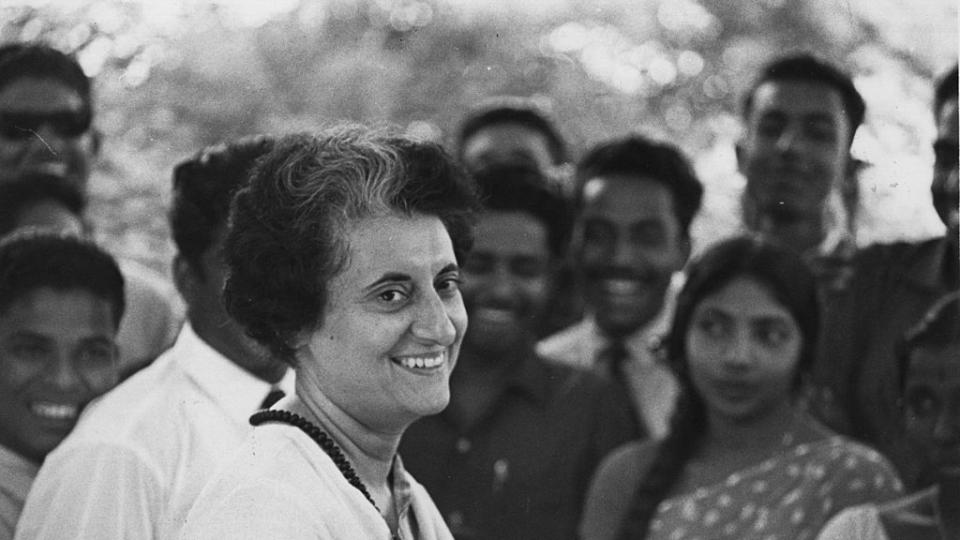In 1917, Indira Gandhi was born in Allahabad, India. You may not remember the time when she was alive, but surely everyone knows the figure of a not very tall woman, with a distinctive white lock of hair and a deep, thoughtful look.
This is Indira Gandhi – a controversial, mysterious, strong woman, the first woman prime minister in Indian history, loved and hated at the same time.
Born in the turbulent 1917, on November 19, shortly after the October Revolution, in Alhabad, India, in the famous family of political activists – Nehru. Her father, Jawaharlal Nehru, was one of the most prominent members of the movement to reject British colonial rule, the leader of the Indian National Congress (INC), which at the time cost him not only the heroic aura of a national independence fighter. 10 years in prison.
Indira grew up in the midst of the struggle for independence in a highly politicized family. The education he received in a private school in Switzerland was expensive because he accompanied his mother during her treatment for tuberculosis, which proved unsuccessful. After her death, she moved to Somerville College, Oxford, but did not graduate.
She was elected president of the youth organization of the Indian National Congress in 1956, and in 1964, after the death of her father, was elected in his place in parliament.
At that time, almost no one believed in Indira, not even the people who promoted her to this post with the intention of ruling through her. Her husband Feroz Gandhi, with whom she was separated, had already died in 1960. She was not taken seriously politically and intellectually and was even nicknamed “gungi gudiya” (empty-headed doll).
But in just five years, Indira Gandhi became one of India’s most influential prime ministers.
Indira Gandhi nationalized the banks; in the years of her rule, industry, including heavy industry, developed rapidly in the country; the first NPP was put into operation (in the state of Maharashtra); in agriculture the so-called The “Green Revolution”, thanks to which India became independent for the first time in many years from external supplies of food and agricultural products.
And here comes the reason why Indira is both hated and loved.
In 1975, the Allahabad Supreme Court found Indira Gandhi guilty of electoral irregularities in the 1971 election, ordered her to resign, and banned her from political activity for six years.
In response, Gandhi, invoking Article 352 of the Constitution, declared a state of emergency. During it, India achieved a number of successes, for example, the severe religious conflicts were practically stopped. Other measures are not at all popular, such as the sterilization ordinance to curb the steady growth of the population, the closure of some newspapers and the restriction of political freedoms.
In 1977, Gandhi overestimated his own popularity and called early elections, which he lost. She returned to power in 1980. Her second term as prime minister was filled with conflicts with Sikhs living in Punjab. Sikh leader Jarnail Singh Bhidranwal declares a “Sikh independent self-governing community.” The separatists support Pakistan in the severe conflict between the two countries.
In June 1984, terrorists seized the Sikh shrine, the Golden Temple in Amritsar. In response, the Indian government conducted a Blue Star military operation, in which the temple was liberated and about 500 of its defenders were killed.
The Sikh’s revenge was not long in coming – on October 31, 1984, Indira Gandhi was killed by her bodyguards. For the morning of October 31, she has a meeting scheduled, which she looks forward to with particular pleasure – a television interview with the famous English writer, playwright and actor Peter Ustinov.
Indira Gandhi has been preparing for the meeting for a long time, putting saffron-colored curtains (blue crocus), which in her opinion should complement the effect of the screen. He decides to take off his armored vest for the interview, believing that it makes it full, which later turns out to be fatal.
The government never understands who ordered Indira Gandhi’s assassination.
For some, she continues to be the messiah after winning the hearts of the poor and underprivileged with her social assistance programs and “Down to Poverty” slogans.
For others, it is the monster that imposed the “State of Emergency” – the darkest period in India’s democratic history, when the political opposition was ruthlessly suppressed, opponents were imprisoned, and the free media that India is so proud of – suffocated for 19 months. .
However, in the history of her country, Indira Gandhi remains not only the first woman to hold the post of prime minister, but also a smart and energetic politician who did much to strengthen the country and its international prestige.









